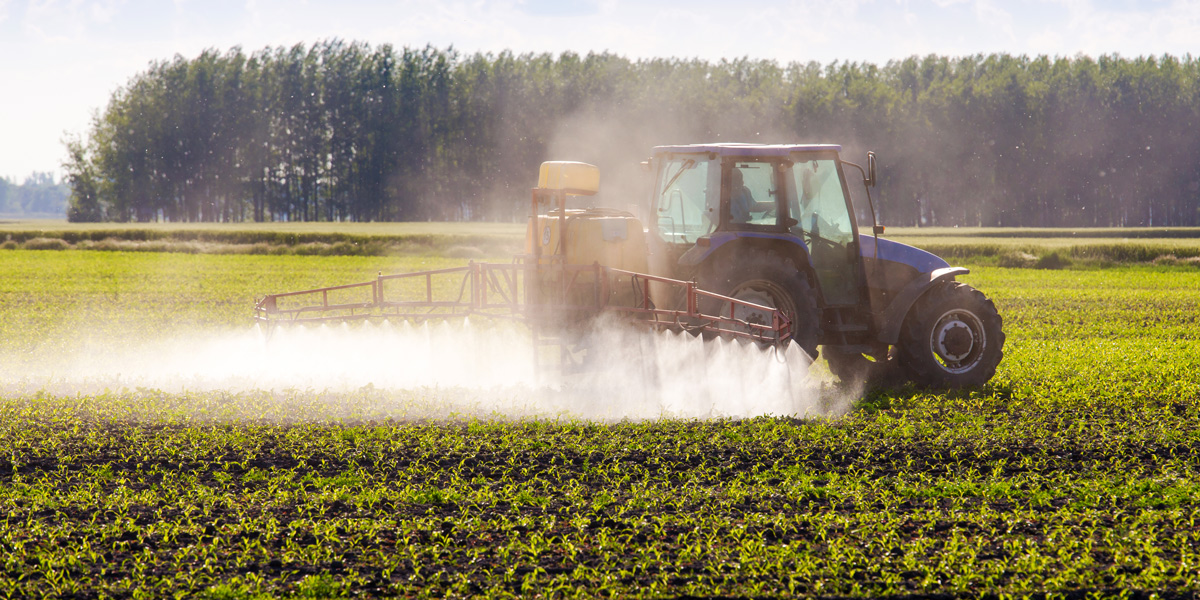
World-beating levels of glyphosate in soils explode claims that GMO farming with herbicides is sustainable
High levels of the weedkiller chemical glyphosate and its toxic breakdown product AMPA have been found in topsoil samples from no-till fields in Brazil, in a study by an international team of scientists from Brazil, Portugal and the UK.
No-till farming avoids ploughing. Although no-till and low-till farming is possible in organic systems, since as far back as the 1970s a growing number of conventional farmers have used herbicide applications instead of ploughing to control weeds. Often this wasn't driven by environmental concerns but by a desire to cut down on fuel and labour costs.
But the environmental benefits of no-till farming were seized upon by the agrichemical industry with the advent of herbicide-tolerant GM crops to try to give them a veneer of sustainability. The argument put forward – most notably by the GMO industry consultants Graham Brookes and Peter Barfoot – is that no-till GMO farming with herbicides conserves and enriches soil and sequesters more carbon, as well as reducing the fossil fuels that would otherwise be used in tractor ploughing.
However, the GMO and glyphosate promoters often ignore or minimise the issue of glyphosate-resistant weeds, which have forced large increases in the use of multiple herbicides as farmers fail to control weeds through applying glyphosate alone. And some "no-till" farmers have even been driven back to ploughing as the only way to control multi-herbicide resistant weeds.
In fact, according to a recent article, a lot of the farmers in the US who are claiming to be no-till may not be anything of the sort. Most "no-till" farmers, it seems, are only reducing their tilling, which "may cancel out the climate and soil-health benefits that have spurred the no-till hype". And most of these "no-till" farmers "do not engage in other beneficial practices such as planting cover crops".
High levels of soil contamination
Despite all this, the agrichemical companies seeking the renewal of the authorisation of glyphosate by the European Union in 2022 have made a big part of their pitch the claim that "One of the greatest benefits of glyphosate is its ability to foster healthier soils by reducing the need for tillage (or ploughing)."
What this ignores is the vital issue of toxicity to soils, water, humans, and wildlife from glyphosate use.
The new study looked at long-term no-tillage farming systems in Brazil, where glyphosate has been applied for more than 35 years. Soil samples were taken from no-till fields and nearby subtropical forests. The researchers found that glyphosate and AMPA were present in all soil samples, reaching values higher than those described for soils so far in the literature, with peak concentrations of 66.38 mg/kg soil for glyphosate and 26.03 mg/kg soil for AMPA.
Glyphosate was found to degrade slower in forest soils than in no-till farm soils, possibly due to the different microbial communities present.
The researchers write, "This soil contamination poses a risk not only to food quality and human health (since these compounds have been identified as endocrine disruptors) and ecological processes for ecosystem services maintenance. GLY [glyphosate] and AMPA presence in soil may promote toxicity to key species for biodiversity conservation, which are fundamental for maintaining the interactions that ensure environmental services."
The researchers provide a long list of human diseases that have been linked in studies to glyphosate herbicide exposure, including ADHD, kidney disease, cancer, Alzheimer's, Parkinson's, miscarriage, and birth defects. They comment: "The results obtained from the present model should be taken as a warning, and should be used to review GLY application regulations and policies."
Report: Claire Robinson and Jonathan Matthews
---
The new study:
Pesticides in a case study on no-tillage farming systems and surrounding forest patches in Brazil
Karlo Alves da Silva, Vitoria Beltrame Nicola, Rafaela Tavares Dudas, Wilian Carlo Demetrio, Lilianne dos Santos Maia, Luis Cunha, Marie Luise Carolina Bartz, George Gardner Brown, Amarildo Pasini, Peter Kille, Nuno G. C. Ferreira & Cíntia Mara Ribas de Oliveira
Scientific Reports volume 11, Article number: 9839 (2021)
https://www.nature.com/articles/s41598-021-88779-3